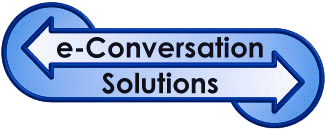Looking to develop content for a new website? Trying to determine if this customer prospect is a good fit for your business? Looking to recruit that next superstar employee? Trying to motivate a recalcitrant supplier to go above and beyond?
Use your company vision as a foundation. Don’t have a vision? You probably should! But you may say to me, Mark, I’m busy running my operation. I don’t have time for strategy discussions. Besides, I know what I want to do! But do you really?
How does a vision impact your various stakeholders? Let’s look at 3 visions. Think about how they might influence you as a leader, employee, customer or supplier. In my days at Motorola, we had “What you never thought possible” then “Intelligence Everywhere”. The vision after that, whether articulated or not was “Maximize Shareholder Value”.
- As a leader, how would you behave if you were tasked to achieve what you never thought possible. Yes, you might fail, but if you succeeded. Wow! Intelligence Everywhere suggests being smart, but how much of a chance will you take? Maximize value seems like a recipe for short term profitability.
- As an employee, who do you want to work for? How would the different visions impact your salary negotiations? What kind of long term commitment are you willing to make?
- From a customer’s perspective, your vision, may not make much of a difference. They have a set of tasks / services that they need. Can you execute at the appropriate price? But, customers are people too. They would like to do business with those who share a common vision. If profitability is key to your customer, one vision may resonate; if that customer is looking to grow and expand beyond their traditional base, maybe another vision will be the differentiator.
- These days, I look at vision from a supplier’s point of view. If you want me to create content, your vision helps me craft the story. If profitability is key to your vision, then, the signal to me is that my price to you will be the most important consideration. More than anything, if I am in tune with your vision, I am more likely to be successful working with you.
Creating a Vision, Mission etc, is not a new concept. Kenny Hirschhorn, a noted futurist, utilized a system that he called V-M-G-O-S-T-E-M. Vision, Mission, Goal, Objective, Strategy, Tactic, Execution, and Measurement. This structure is a bit complex, and possibly more corporate that you may desire. However, it does provide a process to connect the actual execution with the vision and mission. Using this process would be difficult on a day to day basis, but if you have a decision to make about a product or customer (tactic) you might run it upstream and ask if it is in alignment with your Vision, Mission etc. Not sure if the tactic will work and be profitable? Think about how you will execute and measure success.
For example, a software consultancy that focuses on major corporations, was offered a pretty cool concept that would allow small business (restaurants, car repair etc) the ability to use big data. Sounded like a good idea. However, I pointed out that his whole business was aligned with a few larger contracts. He had no model to take hundreds of $100 orders. A home remodeler, whose vision was to help you solve your living problems, chose to pass on jobs where he didn’t feel that his knowledge was being appreciated. While prospective customers may have seen the remodeler as a builder, he saw himself as a person who helps improves the way you and your family lives. Don’t think that’s what you need? Don’t hire him.
The vision of e-Conversation Solutions, Inc. is to tell the best story of your business. We do this by creating content around your vision and use the internet to integrate it into your sales, marketing and customer service. Don’t have a vision. We can help you with that.
This vision / mission may sound good. However, often the challenge is aligning it with what your customer is looking for. I was in a meeting with one of my customers and his stakeholders and I articulated my vision and mission, to which my customer noted with a smile, “He built our website”. Later he said to me, “I pay you for getting things done, not this strategy stuff.” But if all I did was things, would he have hired me at all?
Trying to explain to an employee, why a task is important? You could actually use V-M-G-O-S-T-E-M tie it back to a vision. It helps put the activity in perspective. After putting that task in perspective once, encourage the employee to do it themselves, next time they are not sure where an assignment fits.
So, understand your vision and take it to heart. It will help guide your decision making and where it makes sense enthuse your employees, customers and suppliers. On the other hand, you still need to provide the goods and services that are expected.
In the end, it starts with your vision. What is the vision and mission of your business? How does it help you make decisions?
This was also published in Business Unplugged. Click here for link.





